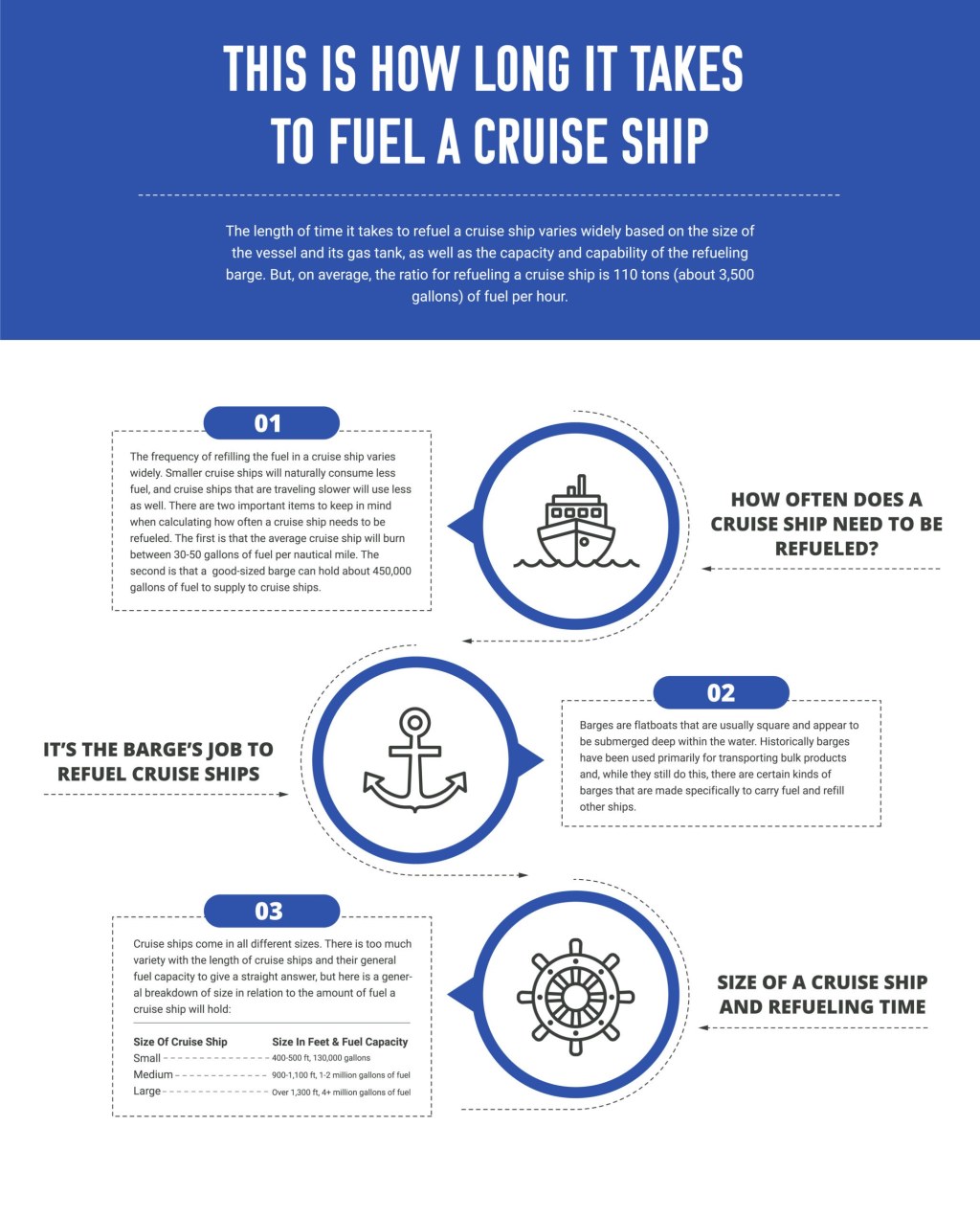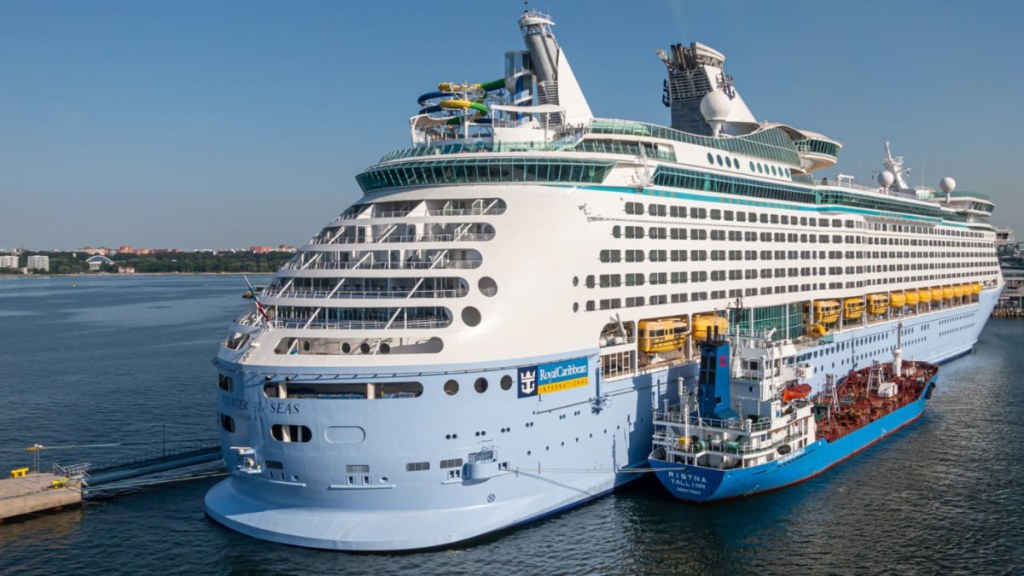How Much Gas Does a Cruise Ship Hold?
Introduction
Dear cruise ship aficionado,
Welcome to our informative article on the topic of how much gas a cruise ship holds. As a passionate enthusiast of cruise ships, you must be curious about the fuel capacity of these magnificent vessels. In this article, we will explore the fascinating world of cruise ship fueling and uncover some interesting facts. So, fasten your seatbelt and get ready to embark on a journey of knowledge!
Overview

Image Source: acruisingcouple.com
A cruise ship requires a massive amount of fuel to power its engines and provide a comfortable experience for passengers. The amount of gas a cruise ship can hold varies depending on its size and design. In general, these floating cities carry an extensive supply of fuel to ensure uninterrupted voyages across the seas.
What
📈 What is the average gas capacity of a cruise ship?

Image Source: cruisehive.com
The average gas capacity of a cruise ship can range from 1 million to 8 million gallons. However, larger and newer cruise ships can hold even more fuel, surpassing the 10 million-gallon mark. These enormous quantities are necessary to propel the ship through long distances and ensure a steady power supply for all onboard facilities.
Who
👤 Who determines the gas capacity of a cruise ship?
The gas capacity of a cruise ship is determined by its designers and engineers during the shipbuilding process. They take into account various factors such as the ship’s size, propulsion system, and intended itinerary. The goal is to ensure that the ship can carry enough fuel to reach its destinations without frequent refueling stops.
When
📅 When is the gas capacity of a cruise ship replenished?
The gas capacity of a cruise ship is usually replenished during its scheduled port calls or at specialized fueling stations located in strategic maritime locations. The timing of refueling depends on the ship’s itinerary and fuel consumption rate. Cruise lines carefully plan these operations to minimize disruptions to passenger activities and ensure a seamless experience.
Where
🌏 Where are the fuel tanks located on a cruise ship?
The fuel tanks on a cruise ship are strategically located in designated compartments within the hull. These compartments are typically situated towards the lower part of the ship to maintain stability. Special safety measures, such as fireproofing and insulation, are implemented to prevent any risks associated with storing large amounts of fuel.
Why
💡 Why do cruise ships carry such large amounts of gas?
Cruise ships carry large amounts of gas to ensure a safe and uninterrupted voyage for passengers and crew. These vessels operate in remote areas of the world, where fueling facilities may be limited or non-existent. By carrying a significant fuel supply, cruise ships can navigate long distances without the need for frequent refueling, allowing for a smoother and more enjoyable travel experience.
How
👀 How is the gas consumption of a cruise ship calculated?
The gas consumption of a cruise ship is calculated based on several factors, including its speed, distance traveled, and fuel efficiency. Advanced technologies and monitoring systems allow cruise lines to accurately determine the fuel consumption of their ships. This data is used to optimize operations and minimize environmental impact by implementing fuel-saving measures whenever possible.
Pros and Cons
☑ Pros of a cruise ship carrying a large gas capacity:
1. Extended range for traveling to remote destinations.
2. Reduced dependency on frequent refueling stops.
3. Enhanced stability due to proper weight distribution.
4. Ability to operate in areas with limited fueling facilities.
5. Flexibility in itinerary planning.
❌ Cons of a cruise ship carrying a large gas capacity:
1. Increased initial construction and operating costs.
2. Added weight, potentially impacting fuel efficiency.
3. Requires specialized infrastructure for refueling.
4. Environmental concerns related to emissions and spills.
5. Limited flexibility in changing itineraries at short notice.
FAQs
❓ How often does a cruise ship need to refuel?
A cruise ship typically needs to refuel every few days or weeks, depending on its size and fuel consumption rate. The itinerary and cruising speed also play a role in determining the frequency of refueling.
❓ Can a cruise ship run out of gas?
Running out of gas is highly unlikely for a cruise ship. The fuel consumption is carefully monitored, and refueling operations are planned well in advance to avoid any disruptions to the voyage.
❓ How is the gas capacity of a cruise ship measured?
The gas capacity of a cruise ship is measured in gallons or metric tons. It refers to the maximum amount of fuel the ship’s tanks can hold when fully loaded.
❓ What type of gas do cruise ships use?
Most cruise ships use heavy fuel oil (HFO) or marine diesel oil (MDO) as their primary fuel sources. These fuels have high energy density and are specifically designed for marine applications.
❓ Are there any alternative fuels being explored for cruise ships?
Yes, cruise lines are actively exploring alternative fuels such as liquefied natural gas (LNG) and hydrogen to reduce emissions and environmental impact. These fuels have the potential to revolutionize the industry and make cruise ships more sustainable in the future.
Conclusion
In conclusion, the gas capacity of a cruise ship is a crucial factor in ensuring smooth and uninterrupted voyages. These floating marvels carry an immense amount of fuel to power their engines and provide an unforgettable experience for passengers. While there are pros and cons to carrying such large gas capacities, cruise lines continue to innovate and explore cleaner and more sustainable fuel options. So, the next time you embark on a cruise adventure, take a moment to appreciate the engineering marvel that keeps your ship sailing!
Final Remarks
Thank you for joining us on this exploration of how much gas a cruise ship holds. We hope this article has provided you with valuable insights into the world of cruise ship fueling. As always, please remember that the information presented here is for informational purposes only and may vary depending on different cruise ship models and operators. Bon voyage!